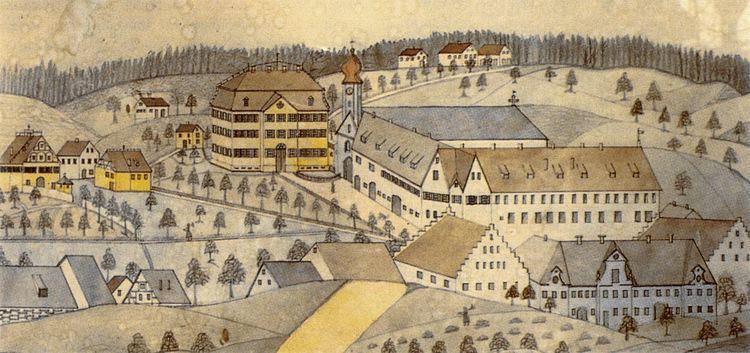Date dissolved 1802 | Government Elective principality Preceded by Succeeded by Founded 1376 | |
 | ||
The Imperial Abbey of Baindt (German: Reichskloster Baindt) was a Cistercian nunnery in Baindt in the district of Ravensburg in Baden-Württemberg, Germany.
Contents
Cistercians
The abbey was founded in 1240 by Konrad of Winterstetten in the hamlet of Baind and nuns from the Cistercian abbey of Boos moved in the same year. The first completed monastery wing was consecrated in 1241 and later the same year King Konrad IV declared the abbey free of any vogt (lay advocate), a rare privilege for German abbeys, often subjected to encroachments and abuses by their vogt. In 1376, Baindt was granted imperial immediacy, which gave it the status of an Imperial abbey, although it remained subordinate to the abbot of Salem Abbey in spiritual matters. The abbess was also granted the privilege of lower justice over the then approximately 200 subjects living in Baindt’s small territory. That privilege was confirmed during the first half of the 18th century.
As an Imperial Estate, the abbess had seat and voice in the Imperial Diet as a member of the Swabian bench of prelates. She also had seat and voice in the diet of the Swabian Circle.
The nunnery was decimated during the Black Death and destroyed in 1525 in the German Peasants' War and again in 1643 in the Thirty Years' War. It was rebuilt and refurbished in Baroque style in the 18th century.
The nunnery’s community, which had averaged 25 nuns for much of its history, reached 37 nuns in 1797, its highest number ever. Five years later, it was dissolved and secularized in the course of the German mediatisation. It was converted into an immediate principality and granted as a fief to the Count of Leyden in 1802, then to the Count of Aspermont-Linden in 1803 and, following the mediatisation of Aspermont-Linden in 1806, it was absorbed into Württemberg. The property was sold to private owners in 1812.
The abbey church of Our Lady became the parish church, to which the remains of the founder were transferred in 1842, after demolition of the claustral buildings had begun in 1841.
The church, now dedicated to St. John the Baptist is home to a depiction of Our Lady of Ludźmierz.
Franciscans
In 1903 the former gatehouse of the abbey was bought by the Franciscan sisters of Heiligenbronn.
